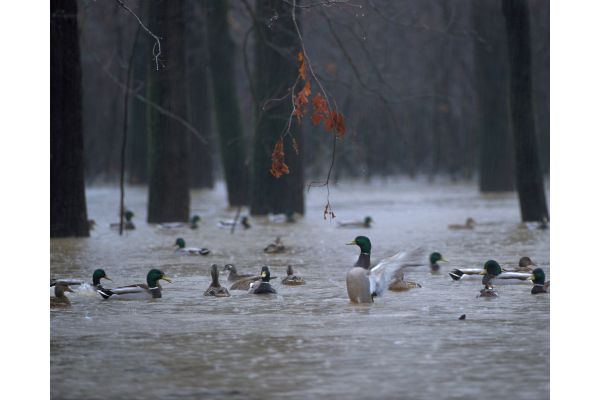Project Will Help Protect Over 2,100 Acres in Mississippi Alluvial Valley
ST. CHARLES, Ark – Aug. 18, 2025- The Migratory Bird Conservation Commission approved $2.1 million in North American Wetlands Conservation Act (NAWCA) funding to support a new Ducks Unlimited project at White River National Wildlife Refuge (NWR). The wetland enhancement project will restore and protect 2,105 acres of critical habitat across Arkansas and Mississippi, providing vital support for millions of migratory birds that depend on the Mississippi Alluvial Valley during their annual migration.
“For more than 35 years, NAWCA has been the gold standard for wetlands conservation in North America,” said Ducks Unlimited CEO Adam Putnam. “Every dollar invested in the program is typically doubled or tripled by matching contributions, making it an incredible return on investment that benefits America’s hunters, migratory bird populations and outdoor economy. This program maintains its success through consistent, bipartisan support from Congress and the Administration, and we’re ready to help turn this investment into habitat that will further sustain waterfowl populations.”
The Mississippi Alluvial Valley once represented North America’s largest forested wetland ecosystem and remains the heart of the Mississippi Flyway, a crucial migration corridor for waterfowl, wading birds, shorebirds, and neotropical migrants traveling between breeding grounds in the Prairie Pothole and Boreal Forest regions and their Gulf Coast wintering habitats.
Restoration work will be performed across three separate tracts and will include replacing failing water control structures and repairing/constructing levees to help with water management in public bottomland hardwood tracts and moist soil units. As part of the grant, a conservation easement will permanently protect an additional tract.
“The multi-phase wetland enhancement initiative will improve hydrological function across bottomland hardwoods and moist-soil units on state and federally owned lands,” said Ducks Unlimited Biologist Jake Spears. “The project will enhance over 2,100 acres of migratory bird habitat, benefiting several different waterfowl species and other wetland-dependent wildlife.”
Beyond wildlife conservation, the project will deliver public benefits, including improved water quality in adjacent waterways, natural flood storage capacity, and enhanced soil conservation through reduced sediment and nutrient runoff. Public recreational access will be provided on 1,690 acres of the enhanced wetlands, encompassing state and federally owned areas as well as non-profit organization properties. These areas will remain open for hunting and other recreational activities while being managed primarily for migratory bird habitat and threatened and endangered species conservation.
This project builds on previous wetland conservation investments under NAWCA. The approach connects public and private conservation efforts across the landscape to create larger, more effective habitat areas.
By restoring wetlands that flood seasonally, many of which have been lost over time, the project helps maintain the Mississippi Alluvial Valley’s natural variety of ridges, low-lying areas, and backwater swamps, which create rich habitats for diverse wildlife communities.
Additional project funding comes from partners First Horizon Foundation and Greentree Holdings, LLC, who are contributing a combined $260,000 in matching funds toward the project.
About Ducks Unlimited
Ducks Unlimited Inc. is the world’s largest nonprofit organization dedicated to conserving North America’s continually disappearing wetlands, grasslands and other waterfowl habitats. Established in 1937, Ducks Unlimited has restored or protected more than 19 million acres thanks to contributions from more than a million supporters across the continent. Guided by science, DU’s projects benefit waterfowl, wildlife and people in all 50 states. DU is growing its mission through a historic $3 billion Conservation For A Continent comprehensive campaign. Learn more at www.ducks.org.
Read the full article here




